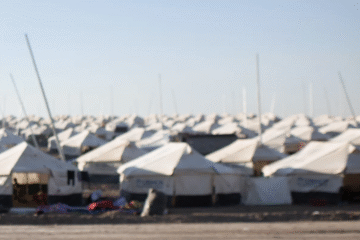Search for Missing Ezidis – A Legal and Logistical Nightmare
Efforts to trace thousands of Ezidis abducted during the 2014 Sinjar genocide remain stalled amid political inertia and structural obstacles, a new report reveals.
More than a decade after the Islamic State’s genocidal attack on the Ezidi people in northern Iraq, the search for those still missing has yielded only limited progress. A newly published investigation by the Syria Justice and Accountability Centre (SJAC) sheds light on the enduring challenges to locating over 2,800 Ezidis, many believed to have been trafficked into and detained in Syria during the group’s reign of terror.
The findings underscore the far-reaching impact of the August 2014 massacre, when thousands of Ezidi men, women, and children were killed, enslaved, or forcibly disappeared in what has since been recognized as an act of genocide. While hundreds have since been freed and several mass graves unearthed in Sinjar, the majority of cases remain unresolved, leaving families trapped in uncertainty.
A Fractured Effort
The report paints a sobering picture of a search effort hampered by fragmented governance, inadequate cooperation across borders, and a lack of unified records of the disappeared. Families of the missing are left in a state of limbo, unable to resolve legal issues such as inheritance, guardianship, or remarriage—adding layers of hardship to the already devastating loss.
Civil society organizations and survivors have led grassroots initiatives to document and trace missing persons. However, they continue to face restricted access to areas of interest, opaque bureaucratic structures in northeast Syria, and no centralized mechanism to manage and verify information about the missing.
According to the SJAC, this stalemate has left an entire people “psychologically, legally, and politically” stranded, unable to find closure or accountability.
Tracing the Missing Through Syria’s Battlefields
The investigation provides a detailed reconstruction of what likely happened to Ezidi captives in Syria over the past decade, identifying three major phases of captivity and disappearance.
In the immediate aftermath of the Sinjar attack, many were held in Raqqa and surrounding areas, where conditions included torture, forced labor, and execution. Informal and poorly documented burials were common, complicating later identification.
As ISIS territory contracted under military pressure, surviving captives were transferred to Deir Ezzor province, where coalition bombings and ground combat inflicted further mass casualties. Bodies were often buried hastily under rubble or in makeshift graves.
Finally, during the siege of Baghouz—ISIS’s last enclave—survivors endured starvation, overcrowding, and indiscriminate shelling, with many reportedly killed in the chaos of the group’s collapse.
Unique Challenges of the Ezidi Case
One of the key difficulties in recovering and identifying missing Ezidis lies in the nature of their captivity. Unlike other detainees held in formal prisons, Ezidi women and children were often hidden in private homes, compounds, or remote rural sites, leaving little official documentation. This dispersal has complicated forensic efforts and made standard search protocols less effective.
In response, the SJAC has adopted innovative approaches, combining survivor testimonies, digital mapping, and forensic analysis to narrow down likely burial and detention sites. Working with Syrian and international forensic teams, investigators are deploying DNA sampling and contextual site analysis to match remains with missing persons reports and family records.
A Path Forward
Despite the grim outlook, the report outlines practical recommendations for revitalizing the search and addressing institutional shortcomings. These include establishing formal cooperation channels between Iraq and Syrian authorities to share data and enable repatriation; improving transparency and accountability within local governance structures; and prioritizing targeted forensic excavations in areas already identified as potential burial sites.
The SJAC stresses that resolving the fate of the missing Ezidis is not only a humanitarian obligation but also a crucial step toward rebuilding trust and achieving justice after years of violence and displacement.
The disappearance of thousands of Ezidis remains one of the most painful legacies of the Sharfadin-believing people’s genocide at the hands of ISIS. As the report makes clear, their recovery and recognition are essential not just for their families, but for the future of post-war Syria and Iraq alike.



0 Comments